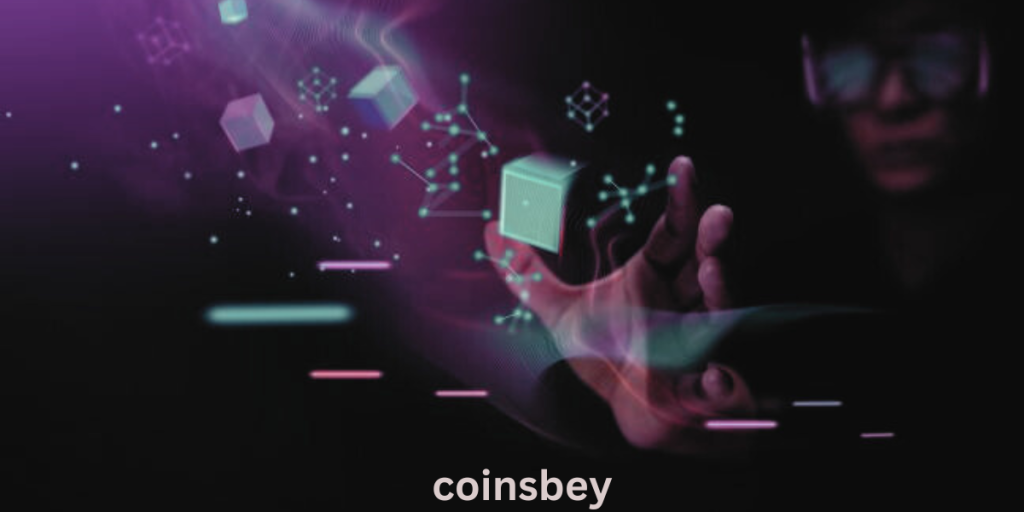What Is Blockchain Gaming In Does Work ?

Blockchain gaming is a category of video games that leverage blockchain technology and cryptocurrencies to introduce new features, mechanics, and ownership structures into the gaming experience. It combines traditional gaming elements with the unique capabilities of blockchain, creating a novel and often decentralized gaming ecosystem. Here are the key aspects of blockchain gaming:
- Ownership of In-Game Assets: In blockchain games, in-game assets such as characters, weapons, skins, virtual real estate, and other items are represented as non-fungible tokens (NFTs) on a blockchain. This means that players have true ownership of these assets, and they can buy, sell, or trade them in and out of the game. Ownership is secured by blockchain technology, ensuring provable scarcity and uniqueness.
- Decentralization: Many blockchain games operate on decentralized networks, meaning they are not controlled by a single central authority. This decentralization can lead to greater player autonomy and transparency within the game ecosystem. Blockchain technology is used for consensus, authentication, and asset ownership, reducing the need for intermediaries.
- Play-to-Earn Mechanisms: Blockchain games often incorporate play-to-earn (P2E) mechanics, allowing players to earn cryptocurrency rewards or valuable NFTs by participating in the game. This can include completing quests, winning battles, crafting items, or contributing to the game’s economy.
- Interoperability: Some blockchain games are designed to be interoperable, allowing players to use their NFTs or assets across multiple games or platforms within the same blockchain ecosystem. For example, an NFT earned in one game might be usable in another game by the same developer or within a shared metaverse.
- Tokenomics: Many blockchain games have their native cryptocurrencies or tokens. These tokens can have various functions within the game, such as governance, staking, or trading. They are often used to facilitate in-game transactions and as rewards for player activities.
- Provable Scarcity and Rarity: Blockchain technology ensures that each NFT representing an in-game asset is unique and scarce. This provable scarcity can add value to rare items, creating a market for collectors and traders.
- Ownership and Digital Rights: Blockchain gaming introduces the concept of digital ownership and digital rights management. Players have greater control over their assets and can assert their rights, such as the right to transfer, sell, or display their in-game items.
- Community and Ecosystem: Blockchain games often foster active and engaged player communities. Players collaborate, compete, and trade with each other, contributing to the growth and sustainability of the game ecosystem.
Popular examples of blockchain games include Axie Infinity, Decentraland, CryptoKitties, The Sandbox, and many others. These games have garnered attention for their innovative use of blockchain technology and the potential for players to earn real-world value through gameplay.
It’s important to note that blockchain gaming is still a relatively new and evolving field, and its success depends on factors such as game design, community engagement, and the broader adoption of blockchain technology. As the industry continues to develop, we can expect to see more creative and ambitious blockchain-based games emerge.
How Does Work?
Blockchain gaming is a new and exciting development in the world of gaming. It involves using blockchain technology to create games that are decentralized, transparent, and secure.
At its core, blockchain gaming works by using smart contracts to manage game assets and transactions. These smart contracts are self-executing and cannot be altered once they are deployed on the blockchain. This means that players can trust that the game is fair and that their assets are secure.
One of the key benefits of blockchain gaming is that it allows players to truly own their in-game assets. This is because these assets are stored on the blockchain, rather than on a centralized server controlled by the game developer. As a result, players can buy, sell, and trade their assets with other players in a secure and transparent way.
In addition to ownership, blockchain gaming also offers new opportunities for gameplay. For example, some games use blockchain technology to create unique, one-of-a-kind items that cannot be replicated or duplicated. This creates a sense of scarcity and exclusivity that can drive demand and value for these items.
Another benefit of blockchain gaming is that it can help to combat fraud and cheating. Because the game is decentralized and transparent, it is much harder for players to cheat or manipulate the game in their favor. This creates a level playing field for all players and helps to ensure that the game is fair and enjoyable for everyone.
Overall, blockchain gaming represents an exciting new frontier in the world of gaming. By leveraging the power of blockchain technology, developers can create games that are more secure, transparent, and engaging than ever before. As the technology continues to evolve and mature, we can expect to see even more innovative and exciting blockchain games in the years to come.
